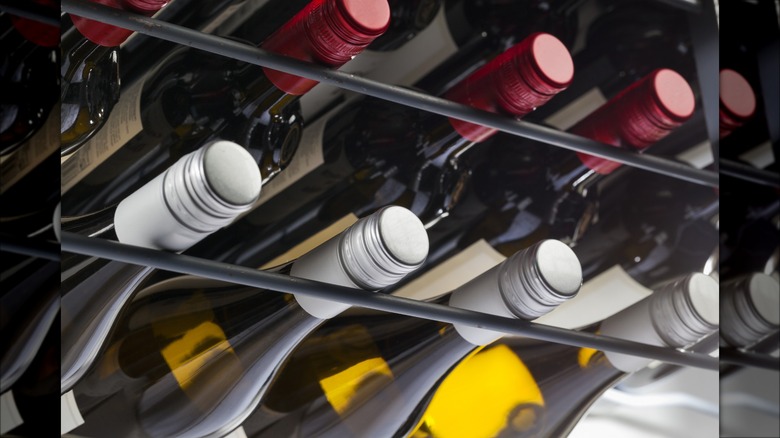Don't Be A Snob — Screw Tops Are Actually Superior On Wine Bottles
The iconic pop of a cork being released from a wine bottle is often considered a quintessential part of the wine-drinking experience. This might explain why opening a screw top wine bottle feels less ceremonious and why these wines are often perceived as cheap. A 2018 study published in the International Journal of Hospitality Management found that participants were more likely to rate wines poured from bottles with a natural cork as higher quality, better tasting, and even more attractive.
However, this perception doesn't always align with reality. Wine expert Dan Eddy, as cited by ABC Fine Wine and Spirits, says that a screw top cap does not translate to a lower-quality wine. Screw top use is on the rise, even in the world of fine wine; according to Forbes, about a third of all wines used screw tops as of 2019. This trend is even more pronounced in regions like New Zealand, which uses screw tops in 90% of its wines. Wine enthusiasts are increasingly acknowledging the benefits of screw caps for wine, from reliable preservation to providing convenience and affordability.
The enduring allure and challenges of corks
Corks have long been the traditional choice for sealing wine bottles. They are primarily made from the bark of cork trees, though synthetic alternatives are increasingly popular. The natural origin of cork offers both advantages and disadvantages. Its tiny pores allow for a controlled amount of oxygen to seep into the bottle, aiding the wine's development. This gentle aeration softens the tannins — the compounds from grape skins that give a drying sensation on your palate — much like decanting does, but much slower.
However, natural cork isn't without its issues. The bark used for cork production can develop TCA (2,4,6-trichloroanisole), a compound that arises when fungi in the bark interact with chemicals from wood processing. Known as cork taint, TCA can impart musty or cardboard-like flavors to the wine. As sommelier Vince Anter from V is for Vino points out, this affects about 3% of wines, which translates to one bottle in about every three cases. Given this frequency, it's likely that most wine enthusiasts will encounter cork taint at some point in their tasting adventures.
How screw tops are changing the wine game
Screw tops, a relatively recent innovation developed in the 1950s, consist of aluminum caps with a plastic liner that winemakers can use to control the amount of oxygen exchange. One debate around screw tops concerns their oxygen regulation compared to natural corks, particularly in how it affects the aging quality of wines, especially reds. This is because red wines are often enjoyed aged and decanted, whereas whites and rosés are usually enjoyed younger and don't require decanting. As screw tops have been in use for less than a century, the jury is still out on their long-term effects on red wine aging. Until then, you can always add oxygen to your screw top reds with an aerator or decanter.
The limited oxygen exchange offered by screw tops is nothing compared to their benefits. Being non-wooden, they're immune to cork taint, which eliminates the risk of musty flavors spoiling your wine. This also makes screw tops incredibly user-friendly, removing the hassle of dealing with stubborn, crumbly, or broken corks. Economically and practically, they stand out too; they're cost-effective, easy to reseal for wine leftovers, and don't require any special tools to open. In an era where convenience and reliability are prized, screw tops are definitely worth a toast.


